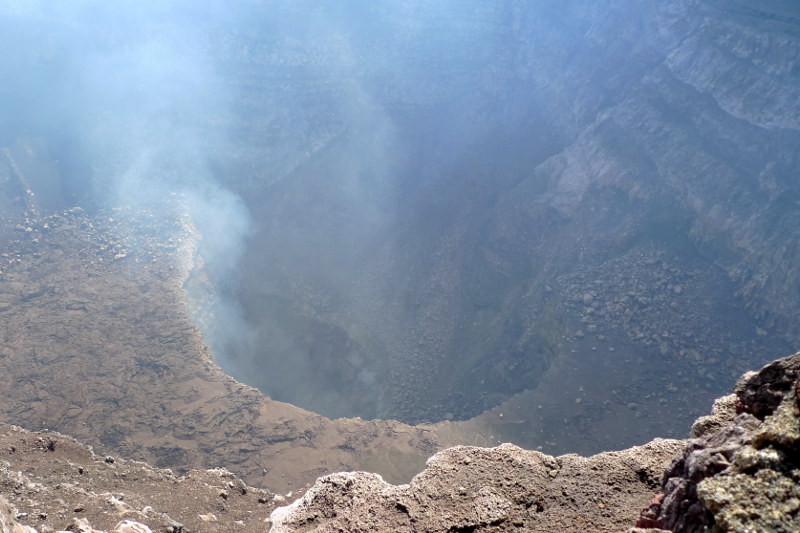The Masaya Volcano is a yin yang place; it’s both dark and light, both soft and hard, both life and death.
The yin…
There’s a tour that you can do in the evenings, on which you are able to see parakeets that live in the side of the volcano. This particular type of parakeet is immune to the sulfur and other noxious gases. The volcano provides a natural protection from predators. Apparently, they also arrive back at their nest at the same time every evening.
And the yang…
This is a sacrificial place. Before Catholicism arrived, women and children were often thrown into the volcano to appease the gods. After the arrival of Europeans, the Spaniards referred to the volcano as the La Boca del Infierno (Mouth of Hell) and erected a wooden cross, La Cruz de Bobadilla (the cross of Bobadilla), in an attempt to curb the human sacrifices and exorcise the demons thought to inhabit the volcano.
You really can’t really spend much time at the volcano because of the amount of sulfur dioxide in the air. We had between 10-15 minutes to wander (none of us wanted to spend the rest of the day sick). On days when the wind blows the volcanic fumes towards the parking lot, people are given gas masks.
On the journey, our guide told us a rather macabre story. In September 2010, one of the guides was leading a group of tourists around the volcano when one of the tourists (José René Morales Guzmán) broke away from the group, ran to the edge of the volcano, and leapt to his death.
When members of his family came to the volcano to look for a body, a freak lightening storm occurred and a bolt of lightening struck and injured three members of the man’s family.
Mysteriously, all that was found of Guzmán was his “brown” leather shoes, cell phone, and some ultrasound papers.
